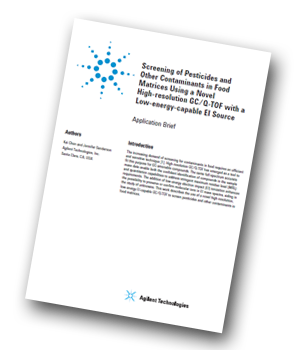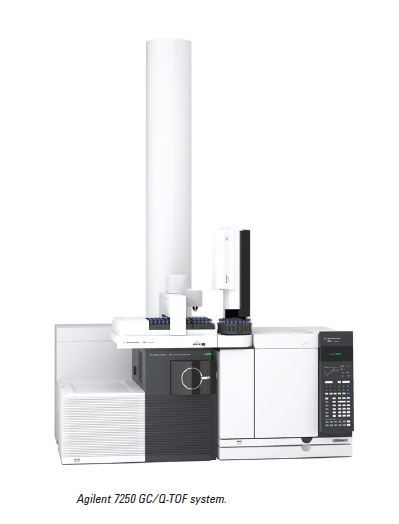Agilent Technologies has produced an application note describing the use of a novel high-resolution, low-energy EI-capable GC/Q-TOF to screen pesticides and other contaminants in food matrices.
 Introduction
Introduction
The increasing demand of screening for contaminants in food requires an efficient and sensitive technique. High-resolution GC/Q-TOF has emerged as a tool to fit this purpose for GC-amenable compounds. The same full-spectrum accurate mass data enable both the confident identification of compounds in the sample and quantitation capabilities to address stringent maximum residue level (MRL) requirements. The addition of low-energy electron impact (EI) ionization enhances the possibility to preserve or confirm molecular ions in EI mass spectra, aiding in the study of unknowns.
Experimental
Sample Preparation
Homogenized food commodities were extracted using a QuEChERS (EN) kit. The cleanup of avocado extract used EMR—Lipid dSPE and drying pouches. Broccoli extract was cleaned up by dSPE for pigment matrix and others by dSPE for fruits/vegetables. To evaluate the method, a mixture of 140+ pesticides was spiked into the organic matrices. Screening of contaminants was performed on nonorganic food extracts.
 Instrument Analysis
Instrument Analysis
A retention-time-locked method was set up to acquire data using an Agilent 7250 GC/Q-TOF system configured with a mid-column backflushing system.
Data Analysis
For data processing, Agilent MassHunter Data Analysis Software B.08.00, including SureMass, was used. The targeted screening of pesticides (a combined quantitative and qualitative workflow) was based on a commercial GC/Q-TOF pesticides library, which contains accurate mass spectra and retention times for 850+ compounds.
Conclusions
- An Agilent 7250 GC/Q-TOF was used successfully to screen pesticides in various food matrices.
- Confidence in results is enhanced by stable RT, repeatable response, and good mass accuracy.
- A wide linear response range was achieved for matrix‑matched calibration.
- Low-energy EI facilitates untargeted screening.




